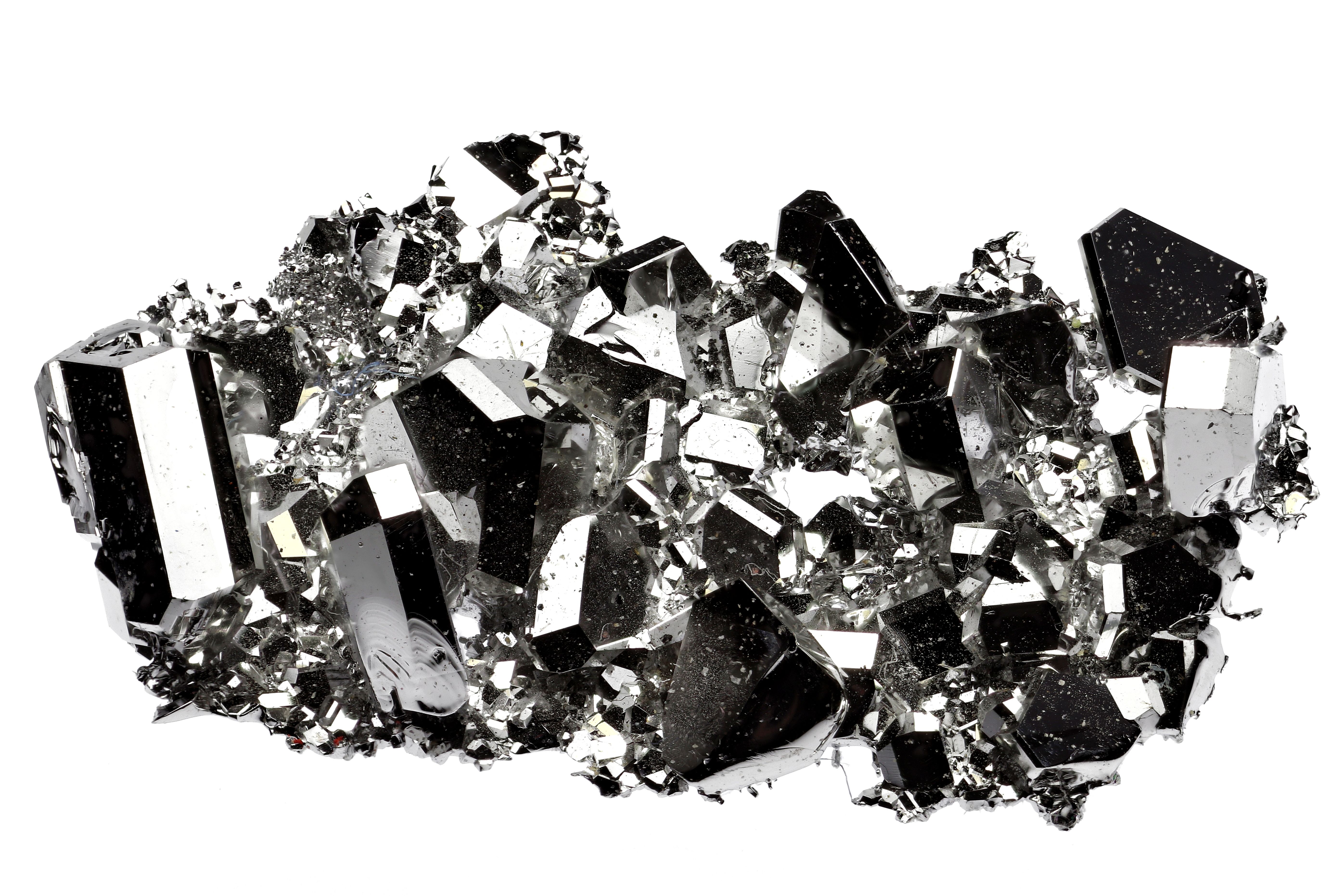Experimental Determination of Ruthenium L-Shell Fluorescence Yields and Coster-Kronig Transition Probabilities
Researchers have experimentally determined the L-shell fluorescence yields and Coster-Kronig transition probabilities for ruthenium for the first time, which will improve the accuracy of X-ray fluorescence quantification results.
A team of researchers at the Physikalisch-Technische Bundesanstalt (PTB) in Berlin, Germany led by Nils Wauschkuhn has experimentally determined the L-shell fluorescence yields and Coster-Kronig transition probabilities for ruthenium for the first time. The findings were published in the Journal of Analytical Atomic Spectrometry (1).
99.99% fine ruthenium crystal grown by vapour deposition isolated on white background | Image Credit: © Björn Wylezich - stock.adobe.com

Ruthenium L-shell fluorescence yields and Coster-Kronig transition probabilities are fundamental parameters that describe the process of X-ray fluorescence (XRF) generation. Fluorescence yields refer to the probability that an X-ray will be emitted when an electron transitions from a higher energy level to a lower energy level in an atom. Coster-Kronig transition probabilities describe the probability that an electron from one subshell will be emitted as an X-ray or transfer energy to another subshell. Accurately determining these parameters for ruthenium is important for the quantification of its content in materials using XRF-based techniques.
Ruthenium is an important element with diverse applications in energy storage, medicine, semiconductor fabrication, and catalysis. XRF techniques are used primarily to determine the ruthenium content in materials, but the lack of accurate fundamental parameter (FP) data for ruthenium has been an ongoing challenge.
The researchers used the PTB's reference-free X-ray spectrometry toolset to conduct transmission and fluorescence experiments on thin film samples to determine the FPs. The resulting fluorescence yields (ωL3 = 0.0459(20), ωL2 = 0.0415(26), ωL1 = 0.0109(9)) and Coster-Kronig factors (f23 = 0.177(32), f13 = 0.528(90), f12 = 0.173(73)) were found to agree reasonably well with some data from the literature.
The PTB reference-free X-ray spectrometry toolset is a set of instruments and methods used to measure the energy and intensity of X-rays emitted from materials. This toolset allows for the quantitative analysis of chemical elements in a sample by comparing the energy and intensity of X-rays emitted from a sample to reference data. The toolset is "reference-free" because it does not require a standard reference sample to calibrate the measurements. Instead, the PTB toolset uses fundamental parameters of the elements, such as the fluorescence yields and Coster-Kronig transition probabilities, to calculate the expected X-ray emission. The accuracy and precision of the PTB toolset make it an important tool in a variety of fields, including materials science, environmental analysis, and medical diagnostics.
This experimental determination of the FPs for ruthenium will improve the accuracy of XRF quantification results, which are essential for determining the ruthenium content in materials. The findings will be particularly useful for the semiconductor industry, where ruthenium and ruthenium-containing materials are important for extreme ultraviolet lithography masks and as interconnect metals.
The team's work also highlights the importance of experimentally determining FP data for chemical elements, rather than relying on purely theoretical or interpolated data. The findings may pave the way for more accurate and reliable XRF quantification results for other elements with limited experimental data.
Overall, this study provides valuable insights into the fundamental properties of ruthenium and demonstrates the potential for experimental determination of FPs for other chemical elements.
Reference
(1) Wauschkuhn, N.; Frenzel, K.; Beckhoff, B.; Hönicke, P. Experimental determination of ruthenium L-shell fluorescence yields and Coster–Kronig transition probabilities. J. Anal. At. Spectrom. 2023, ASAP. DOI: 10.1039/D3JA00085K
AI Shakes Up Spectroscopy as New Tools Reveal the Secret Life of Molecules
April 14th 2025A leading-edge review led by researchers at Oak Ridge National Laboratory and MIT explores how artificial intelligence is revolutionizing the study of molecular vibrations and phonon dynamics. From infrared and Raman spectroscopy to neutron and X-ray scattering, AI is transforming how scientists interpret vibrational spectra and predict material behaviors.